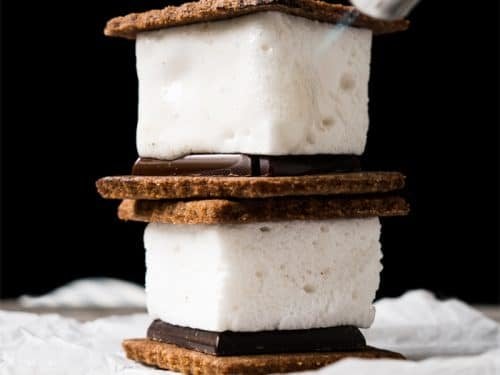Best 5 Options for Butter in 2025: Explore Low-Carb Choices
As dietary preferences continue to shift towards low-carb and high-fat options, exploring the best types of butter for health-conscious consumers in 2025 is essential. Understanding butter nutrition helps inform choices about which types can best fit into a low-carb lifestyle. With a multitude of options available, it's crucial to analyze butter carbohydrates, calorie content, and overall health benefits. This article will guide you through the five best butter choices, focusing on their low-carb attributes and how they compare to traditional choices like margarine.
In this exploration, we’ll define the various types of butter, from salted butter to unsalted butter, and discuss their roles in cooking and baking. You'll find valuable insights into the health benefits of butter, including its fat content and its place in diets such as ketogenic plans. Join us as we delve into the optimal butter for your needs and preferences.
Understanding Butter's Nutritional Values
To make informed choices regarding butter, it's essential to understand its nutritional values. Butter is made primarily from milk fat, with minimal carbohydrates per serving. Most types contain negligible butter carbohydrates, which makes them suitable for low-carb diets. For example, a standard serving (1 tablespoon) typically contains about 0.1 grams of carbs, allowing butter to fit well within many dietary restrictions.
From a calorie perspective, butter is energy-dense, with approximately 100 calories per tablespoon, which predominantly comes from fats. This high-fat content supports feelings of fullness, making it an advantageous choice for weight management when consumed in moderation.
Among the various types of butter, grass-fed butter is gaining popularity for its rich nutrient profile and quality fats, often providing higher amounts of omega-3 fatty acids compared to conventional options. Such butter contains vitamins A, D, E, and K, which further contribute to its health benefits.
Low-Carb Butter Choices to Consider
When selecting butter for a low-carb diet, some options stand out due to their superior nutritional profiles. Here are five of the best low-carb butter choices available in 2025:
1. Grass-Fed Butter
One of the leading choices for health-conscious consumers, grass-fed butter, is sourced from cows that have been grass-fed, leading to a higher concentration of beneficial fatty acids and nutrients. Its unique flavor profile can enhance both sweet and savory dishes, making it a versatile staple in many kitchens.
2. Clarified Butter
Also known as ghee, clarified butter is made by simmering butter to remove the milk solids and water content. This results in a product that has a higher smoke point, making it excellent for cooking at high temperatures, such as frying or sautéing. 
3. Unsalted Butter
Unsalted butter is a favorite among bakers and chefs, as it allows for better control of the salt levels in recipes. It is ideal for those monitoring their sodium intake while being low in carbohydrates, making it a go-to option for various diets.
4. Coconut Butter
A popular butter alternative, coconut butter provides a distinct flavor and is beneficial for those following a low-carb or ketogenic diet. It is rich in medium-chain triglycerides (MCTs), which can support energy levels and fat metabolism. This option is also suitable for those who are lactose intolerant.
5. Vegan Butter
For those seeking dairy-free alternatives, vegan butter—often made from plant oils—can be low in carbs while providing a buttery flavor. Look for brands that use high-quality ingredients to ensure a favorable nutritional profile.
Butter in Cooking and Baking
Incorporating butter into cooking and baking can elevate flavors while maintaining low-carbohydrate counts. Recognizing the butter melting point is crucial to utilizing it properly in your recipes, ensuring that it doesn’t burn or lose its nutritional benefits. Whether you're using it for sautéing vegetables or in creating a flaky pastry, the right type of butter can significantly influence the final outcome.
Butter for Cooking
When cooking with butter, consider the different methods of preparation. For high-heat cooking, clarified butter is ideal due to its high smoke point. However, unsalted butter is suitable for lower-temperature methods and adds richness to sauces and gravies. Always monitor the cooking time to avoid over-browning, which could diminish the flavor.
Butter for Baking
Butter is a fundamental ingredient in many baked goods, contributing to both flavor and texture. Experimenting with different types, such as grass-fed butter or coconut butter, can yield varying results; for instance, grass-fed butter may add a more robust flavor profile while enhancing nutritional benefits.
Recipe Ideas with Butter
Here are some popular ideas for using butter in recipes:
- Butter-based sauces, like garlic herb butter for seafood
- Flaky pastries made with chilled unsalted butter
- Homemade butter spreads infused with herbs or spices
Comparing Butter and Margarine
The debate between butter and margarine has been ongoing. While margarine often contains trans fats, butter is recognized for its natural ingredients, aligning with many health trends. When considering butter vs margarine, it's vital to recognize that butter provides beneficial nutrients absent in synthetic spreads...
